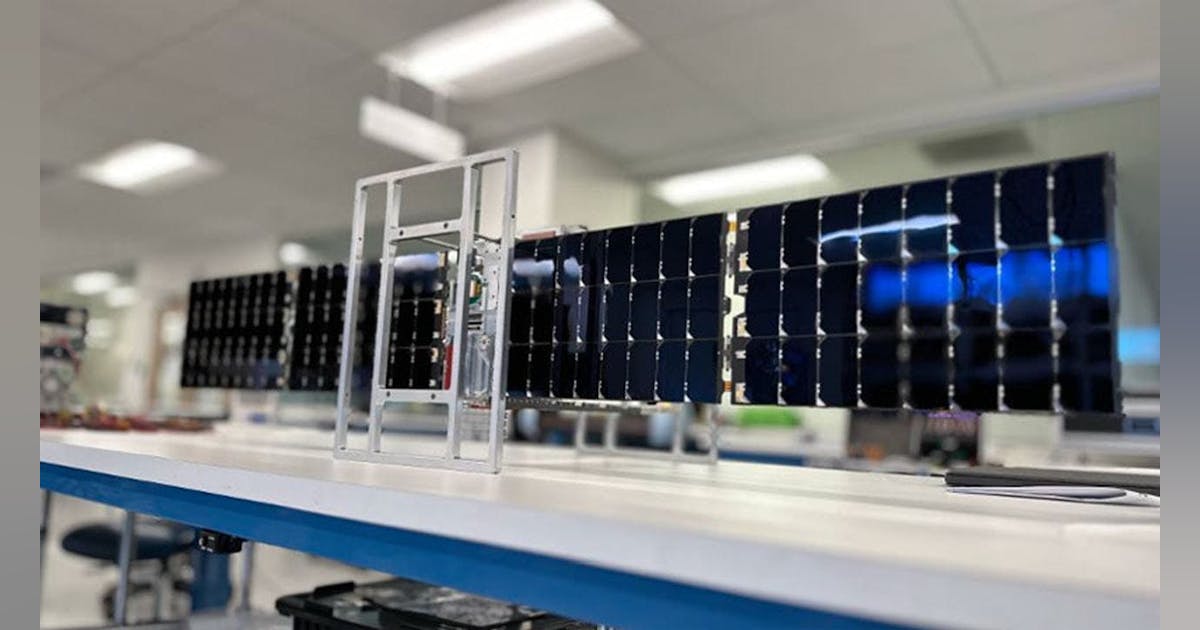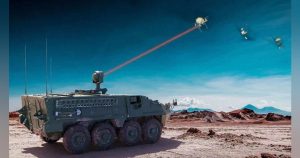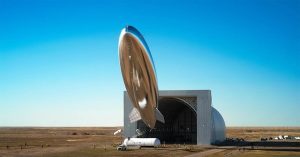Blue Canyon Technologies Launches ARCSTONE CubeSat: Pioneering Lunar Calibration for NASA
Picture this: a satellite the size of a suitcase, crafted at the base of Boulder, Colorado, quietly joins the orbit. It’s not searching for extraterrestrial signals or capturing images but fixating its gaze on the Moon. This mission, named ARCSTONE, marks the latest CubeSat from Blue Canyon Technologies (BCT) aimed at enhancing our view of Earth through precise satellite calibration using lunar illumination.
The Mission Overview
- Mission Name: ARCSTONE (Absolute Radiometric Calibration via the Sun and the Moon)
- Satellite Type: 6U CubeSat (roughly the size of a shoebox)
- Developer: Blue Canyon Technologies, an RTX enterprise
- Launch Date: June 2025, participating in SpaceX’s Transporter-14 rideshare mission
- Orbit: Sun-synchronous, low Earth orbit (~500 km altitude)
- Main Objective: Gaining unprecedented accuracy in measuring the Moon’s spectral reflectance to aid the calibration of Earth-observing satellites.
The Importance of Lunar Calibration & ARCSTONE’s Role
Satellite remote sensing faces the significant challenge of calibrating sensors from space due to atmospheric distortion affecting reflected sunlight. However, the Moon offers a stable, atmosphere-free source of sunlight reflection, serving as the perfect calibration benchmark.
ARCSTONE’s Role: Gather precise data on sunlight reflection off the lunar surface at varying wavelengths, essentially serving as a standard for tuning the accuracy of Earth-monitoring satellites that track weather, climate, and environmental changes.
“The Moon is an outstanding and accessible calibration source offering high accuracy potential. ARCSTONE will enable numerous spaceborne platforms to enhance measurement quality and data products for generations.”
— Dr. Constantine Lukashin, NASA Langley Research Center, ARCSTONE Principal Investigator
Blue Canyon’s Technological Edge: Precision in Compact Form
Creating a CubeSat capable of delivering calibration-grade data involves engineering significant performance into compact hardware. BCT achieved this through several innovations:
- Advanced Guidance, Navigation & Control (GNC): BCT’s ARCSTONE bus achieves a pointing accuracy of merely 0.002 degrees (1-sigma), facilitating precise targeting of the needed lunar or solar segment for spectral analysis.
- Temperature Management: The detector functions at a cool 140 K (-133°C), while the optical bench remains at -3°C, ensuring stable, precise measurements.
- Agility & Stability: The satellite sustains fine stability (1 arc-second over a second), essential for maintaining a steady focus during extended lunar and solar exposure.
- Compact Design: Employing BCT’s modular “XB6” CubeSat bus, the satellite payload occupies the majority of the satellite’s space, maximizing the science-to-mass ratio.
Encased in a box about 10.5 inches per side, it’s more akin to a home appliance than an “Apollo” spacecraft.
From Boulder to the Moon: The ARCSTONE Narrative
Blue Canyon Technologies has been a leader in small satellite endeavors. With ARCSTONE’s deployment, they boast 66 CubeSats and a total of 84 small spacecraft launches. Each project is built, tested, and overseen by a team introducing aerospace precision alongside the dynamic energy of the Rockies.[https://drone.net/global/wp-content/uploads/2025/01/Terra-Xross-Cloud-300×146.png
 Daily operations for ARCSTONE are conducted from BCT’s Mission Operations Center situated in Lafayette, Colorado, providing up to three satellite contacts per day. This facilitates orbit fine-tuning, health checks, and data acquisition.
Daily operations for ARCSTONE are conducted from BCT’s Mission Operations Center situated in Lafayette, Colorado, providing up to three satellite contacts per day. This facilitates orbit fine-tuning, health checks, and data acquisition.
The Science Behind Measuring Moonlight
ARCSTONE is tasked with measuring the Moon’s spectral reflectance—essentially, the extent of sunlight it reflects across different light wavelengths. Through comparisons of ARCSTONE’s lunar measurements to precise solar references, NASA can establish a shared baseline for calibrating Earth-observation satellite sensors. This harmonization ensures satellites, irrespective of their age or prospective use, maintain unified data accuracy, aiding in the evaluation of sea ice, forest cover, and wildfire events.
ARCSTONE’s six-month primary mission will contribute to setting a universal standard for lunar-based calibration, thereby benefiting the entire global Earth science community.
The Timing for Satellite Calibration
The emerging “new space” economy witnesses miniature satellite constellations capturing global imagery. Yet, the value of this data is realized only through its dependability. As instruments grow more sensitive and varied, their calibrations must converge. ARCSTONE fulfills a critical gap by:
- Offering a consistent, universally reliable lunar benchmark
- Enabling affordable, in-orbit calibration for both governmental and commercial satellites
- Supporting future initiatives spanning climate, environmental, and disaster studies
ARCSTONE by the Numbers
| Feature | Parameter |
|---|---|
| Mission Duration | 6 months (primary) |
| Orbit | Sun-synchronous, ~500 km altitude |
| Pointing Accuracy | 0.002° (1-sigma, 3-axis) |
| Stability | 1 arc-second over 1 second |
| Detector Temperature | 140 K (-133°C) |
| CubeSat Size | 6U (approximately 10.5” x 10.5” x 10.5”) |
| Built by | Blue Canyon Technologies, Boulder, Colorado |
| Operations Center | Lafayette, Colorado |
| Launch Provider | SpaceX (Transporter-14, via Maverick Space Systems) |
Fun Facts & Human Stories
ARCSTONE is the first mission dedicated to measuring the Moon’s reflection from space for calibration—an actual lunar venture for satellite data excellence. Blue Canyon’s adaptable CubeSats, often hailed as unsung heroes of the spatial era, bring sophisticated sciences to scales that were once speculative.
The BCT crew humorously note that they’re “moonlighting” for NASA—quite literally this venture, with ARCSTONE’s launch, Blue Canyon’s CubeSat/microsatellite count now equates to a small community.
Expert Tips: Raising the Bar with ARCSTONE
- For Satellite Operators: Anticipate streamlined, reliable flight calibrations sans “sensor standard variances.”
- For Earth Scientists: Greater confidence in sustained, sensor-comparison data trends enables subtle climate trend detection, ecosystem assessment, and emergency response with high-resolution data.
- For Policy Decision-Makers: Investments in CubeSat calibration translated into transformative returns—a compact mission can influence extensive networks of Earth-monitoring satellites.
The Path Forward: Lunar Calibration and CubeSats
ARCSTONE marks the onset. With NASA’s CubeSat launch program flourishing, each new satellite promises enhanced precision, pioneering sensors, and international scientific collaboration. BCT’s range of modular satellites is set for a new phase of missions—smaller, more precise, and budget-friendly than ever.
Expect that soon, a “fleet” of ARCSTONE-like satellites will encircle the Earth, continuously evaluating the planet’s vitality from the lunar mirror.
Conclusion: Gazing Upward and Onward
In the sphere of space, precision is key. Through ARCSTONE and Blue Canyon Technologies, NASA takes a modest step—CubeSat scale—toward the Moon and a massive leap in Earth observation’s future. For ensuring a satellite’s consistent vigilance, trust the Moon’s steady gleam and the expertise of Blue Canyon’s ingenuity.
For those aspiring toward the stars (or simply more accurate weather forecasts), ARCSTONE acts as a reminder: shooting for the Moon indeed clarifies our vision of Earth.
In the midst of lunar myths, spacecraft anecdotes, and tales of compact satellites, the fundamental message remains: the quality of our spatial data is on the brink of immense improvement—catalyzed by a CubeSat dubbed ARCSTONE.













